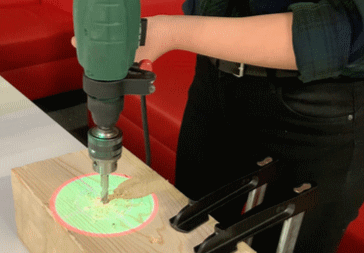Revisited: Comparison of Empirical Methods to Evaluate Visualizations Supporting Crafting and Assembly Purposes

Venue. VIS (2020)
Abstract. Ubiquitous, situated, and physical visualizations create entirely new possibilities for tasks contextualized in the real world, such as doctors inserting needles. During the development of situated visualizations, evaluating visualizations is a core requirement. However, performing such evaluations is intrinsically hard as the real scenarios are safety-critical or expensive to test. To overcome these issues, researchers and practitioners adapt classical approaches from ubiquitous computing and use surrogate empirical methods such as Augmented Reality (AR), Virtual Reality (VR) prototypes, or merely online demonstrations. This approach's primary assumption is that meaningful insights can also be gained from different, usually cheaper and less cumbersome empirical methods. Nevertheless, recent efforts in the Human-Computer Interaction (HCI) community have found evidence against this assumption, which would impede the use of surrogate empirical methods. Currently, these insights rely on a single investigation of four interactive objects. The goal of this work is to investigate if these prior findings also hold for situated visualizations. Therefore, we first created a scenario where situated visualizations support users in do-it-yourself (DIY) tasks such as crafting and assembly. We then set up five empirical study methods to evaluate the four tasks using an online survey, as well as VR, AR, laboratory, and in-situ studies. Using this study design, we conducted a new study with 60 participants. Our results show that the situated visualizations we investigated in this study are not prone to the same dependency on the empirical method, as found in previous work. Our study provides the first evidence that analyzing situated visualizations through different empirical (surrogate) methods might lead to comparable results.
Link to this page:

